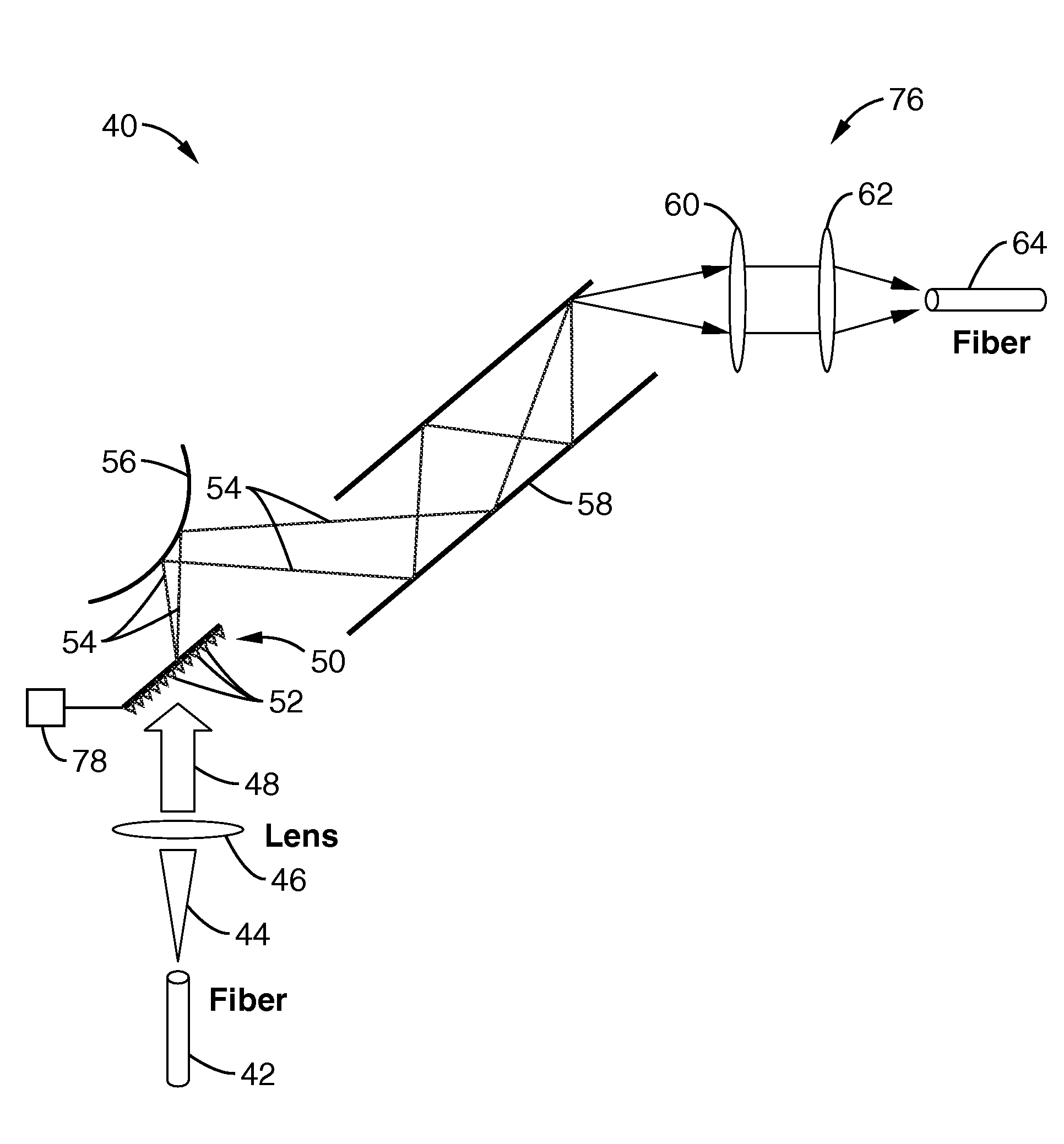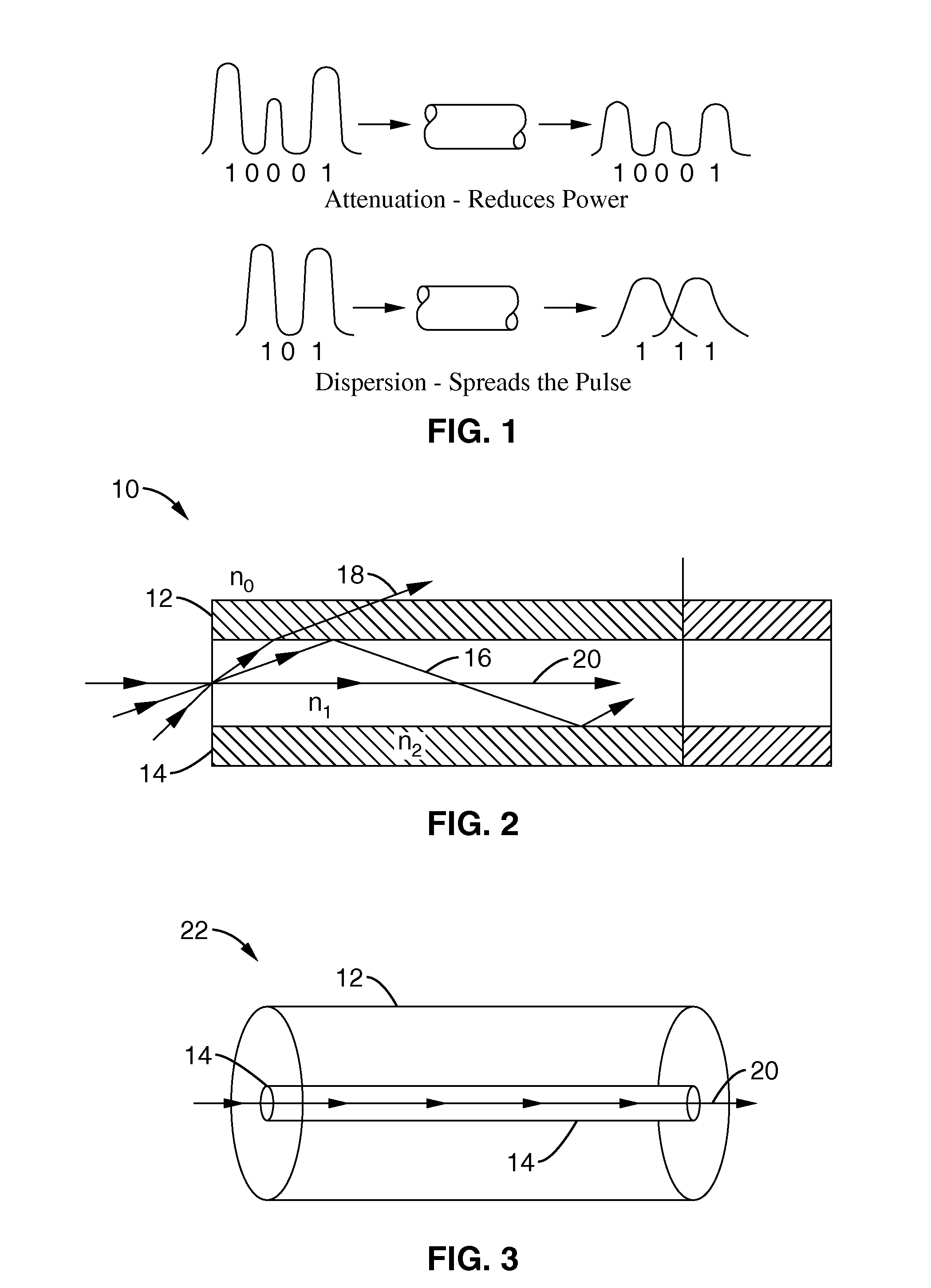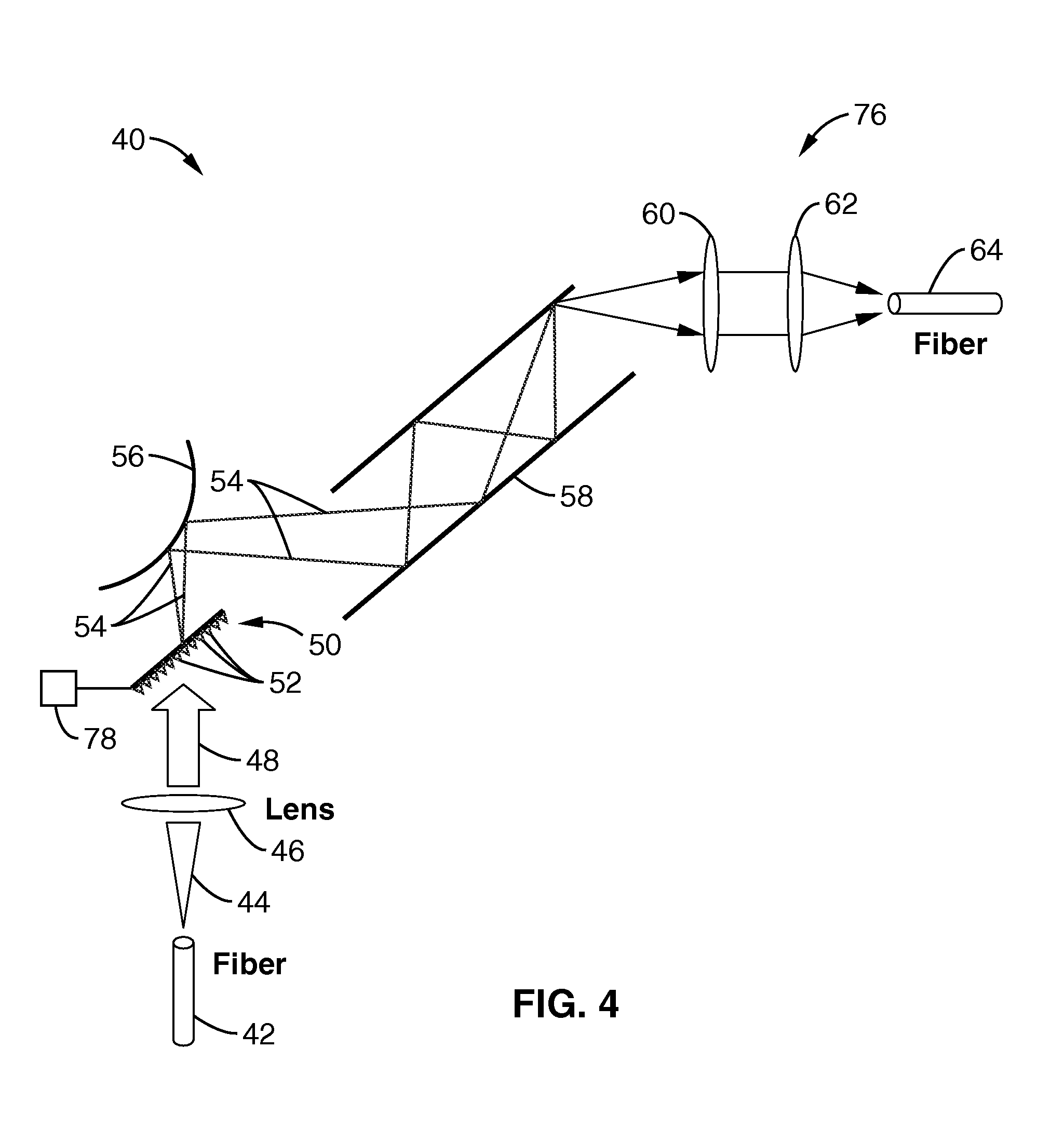Chromomodal dispersion apparatus and methods
- Summary
- Abstract
- Description
- Claims
- Application Information
AI Technical Summary
Benefits of technology
Problems solved by technology
Method used
Image
Examples
Embodiment Construction
[0048]Referring more specifically to the drawings, for illustrative purposes the present invention is embodied in the apparatus generally shown in FIG. 4 through FIG. 14. It will be appreciated that the apparatus may vary as to configuration and as to details of the parts, and that the method may vary as to the specific steps and sequence, without departing from the basic concepts as disclosed herein.
[0049]1. Wave Dispersion in Optical Fibers
[0050]Dispersion, although often undesirable, is an effect that is inherent in nature and understanding of the mathematical and natural origins of this phenomenon is important in efforts to counteract it.
[0051]It is clear that the refractive index in a dispersive medium is frequency dependent, thus waves propagating with different frequencies will travel at different speeds. This has a very important effect upon data transmission. If it is assumes that information is contained in pulses, and if these pulses travel as truly monochromatic waves, d...
PUM
 Login to View More
Login to View More Abstract
Description
Claims
Application Information
 Login to View More
Login to View More - R&D
- Intellectual Property
- Life Sciences
- Materials
- Tech Scout
- Unparalleled Data Quality
- Higher Quality Content
- 60% Fewer Hallucinations
Browse by: Latest US Patents, China's latest patents, Technical Efficacy Thesaurus, Application Domain, Technology Topic, Popular Technical Reports.
© 2025 PatSnap. All rights reserved.Legal|Privacy policy|Modern Slavery Act Transparency Statement|Sitemap|About US| Contact US: help@patsnap.com



